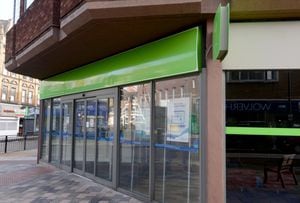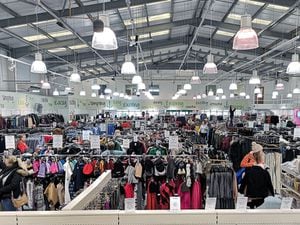Unemployment falls again in the West Midlands
Unemployment in the West Midlands was down again for the three month to April.

The total stood at 145,000 – 4,000 lower that in the November to January quarter.
Nationally unemployment fell by 34,000 to 1.3 million, continuing a general trend which started in early 2012.
The West Midlands unemployment rate at five per cent remains ahead of the Uk rate of 3.8 per cent, the joint lowest level since the end of 1974, reported the Office for National Statistics.
Employment remains at an all-time high in the UK, as the rate for women hit a fresh record.
Employment was up by 32,000 in the three months to April, to 32.7m with the West Midlands contributing 2.78m
The overall employment rate of 76.1 per cent is the joint highest total since records began in 1971.
The number claiming unemployment benefits, including Universal Credit in the West Midlands, rose by 1,915 in May to stand at 124,945 – 3.4 per cent of the working population.
Sandwell saw the biggest rise in the Black Country of 330 to 8,490 (4.2 per cent) with Walsall up by 175 to 6,860 (four per cent) and Wolverhampton increasing by 160 to 9,305 (5.7 per cent).
Dudley had a rise of only five to 7,865 (4.1 per cent).
Staffordshire's claimant total was up 255 at 9,320 (1.7 per cent) with Cannock Chase seeing a rise of 55 to 1,250 (two per cent), South Staffordshire up 50 at 1,105 (1.6 per cent), Stafford having 40 for claimants at 1,185 (1.4 per cent) and Lichfield five more at 1,025 (1.76 per cent).
For Wyre Forest which includes Kidderminster, there were 20 more claimants at 1,280 (2.2 per cent).
Average earnings increased by 3.1 per cent compared to the same period a year ago. This was slower than a 3.3 per cent rise last month.
The employment rate for women was the highest on record at 72 per cent, following changes to the state pension age which have resulted in fewer women retiring between the ages of 60 and 65.
Matt Hughes, deputy head of labour market statistics at the ONS, said: "With employment growth among women coming from full-timers, the overall gap between men and women in hours worked is now the lowest ever - women now average about three-quarters of men's weekly hours, compared with around two-thirds 25 years ago."
The number of job vacancies for March to May 2019 was 837,000, which was 11,000 more than a year earlier but 12,000 fewer than for the three months to February 2019.
The ONS said the number of vacancies had generally been increasing since 2012, but has been falling since early 2019.
Mr Hughes said: "Overall, the labour market continues to be strong, with employment still at a joint record rate.
"However, while the number of vacancies remains high, it has fallen back slightly from the historic highs seen at the turn of the year."





